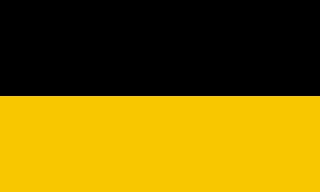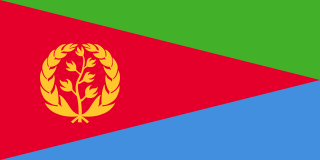 W
WThe flag of Baden-Württemberg has three variants. The civil flag (Landesflagge) has one design, while the state flag (Landesdienstflagge), has two designs. All three flags are a black over gold bi-color, while the state flag has one of two variants of the state arms centered on the flag.
 W
WThe flag of Bogotá was adopted as a symbol of the city on October 9, 1952 through decree 555 issued by the Office of Mayor.
 W
WThe flag of Bremen consists of at least eight equal horizontal stripes of red alternating with white, and checked at the hoist. It is colloquially known as Speckflagge. The civil flag does not contain the coat of arms. The state flag exists in three versionsThe Dienstflagge, which is defaced with the middle coat of arms. The Staatsflagge, which is defaced with the flag version of the coat of arms and usually has twelve instead of eight stripes. The Dienstflagge der bremischen Schiffahrt, which is defaced with the flag version of the coat of arms in the centre and a blue anchor in a white canton. It is used on state buildings used for shipping and navigation, and as the jack on Bremen ships.
 W
WThe flag of Eritrea, is the national flag of Eritrea. It was adopted on December 5, 1995. The flag combines the basic layout and colors from the flag of the Eritrean People's Liberation Front with an emblem of a wreath with the upright olive-branch derived from the 1952–1962 flag. The green color in the flag stands for the agriculture and livestock of the country, the blue represents the bounty of the sea, and the red stands for the blood shed in the struggle for Eritrean independence with the 30 leaves in the wreath representing the thirty years spent in the struggle.
 W
WThe State flag of Jammu and Kashmir was a symbol used in the former Indian state of Jammu and Kashmir between 1952 and 2019, under the special status accorded to the region by Article 370 of the Constitution of India. It was a red-and-white flag with a representation of a plough and three constituent regions of the state. After the abolition of Article 370 in August 2019, this flag lost its official status.
 W
WThis flag was adopted by the Moldavian Soviet Socialist Republic on 31 January 1952. The flag has three horizontal bands of red, green (1/4) and red, with a hammer and sickle in the canton. As defined by the Presidium of the Supreme Soviet of the Moldavian Soviet Socialist Republic on the flag description:The national flag of the Moldavian Soviet Socialist Republic consists of a panel of red color with a green stripe in the middle of the whole flag length, with the image on top of the red part of the flag from the flagpole golden hammer and sickle above a five-pointed red star framed by gold border. The ratio of the flag's width to its length is 1:2 with the bandwidth of green to the width of the flag 1:4
 W
WThe flag of Utrecht has been in use since 1952. It consists of two horizontal stripes of equal width, the upper one white and the lower one red. Similar to the flag of Poland or an upside-down flag of Monaco. In the top left corner of the flag there is a red square with a white cross. The flag originates from two other flags, one part of the Archdiocese of Utrecht, and the other of the (territorial) Archbishopric of Utrecht. In 1951 the province was advised by the Hoge Raad van Adel to adopt a flag to represent the province.